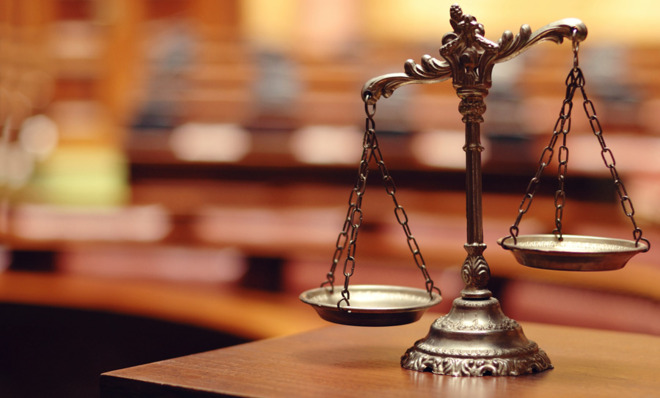What's the best way to measure economic inequality?
The three different measurements paint very distinct pictures of the health of the labor force

A few things are clear about economic inequality in the U.S. We know that it exists, that it's worse than it was 50 years ago, and that it varies somewhat from state to state.
Other aspects are less clear. For example, economists are split on "how much inequality there is and how best to measure it," says Drew DeSilver of the Pew Research Center.
Take these three statistics about economic inequality in the U.S.:
The Week
Escape your echo chamber. Get the facts behind the news, plus analysis from multiple perspectives.

Sign up for The Week's Free Newsletters
From our morning news briefing to a weekly Good News Newsletter, get the best of The Week delivered directly to your inbox.
From our morning news briefing to a weekly Good News Newsletter, get the best of The Week delivered directly to your inbox.
1. The top 20 percent of households by income are responsible for nearly 40 percent of overall spending, while the bottom 20 percent are responsible for less than 10 percent.
2. The top 5 percent of households earned about 22 percent of aggregate income last year, while the bottom 60 percent brought in about 27 percent.
3. The top 1 percent of households hold 35.4 percent of the population's wealth. Meanwhile, the bottom 40 percent has held between 1.5 percent and -1 percent (to account for negative net worth) over the past four decades.
Though all three depict an unequal society, they paint three distinct pictures — the third being the most worrisome by far.
So which is the "truest" measure?
The first stat, from a study by the American Enterprise Institute, measures inequality by expenditure. The idea is that "what matters is someone’s actual standard of living, regardless of how it is attained," according to the National Academy of Sciences. Whether you're buying groceries with a Social Security check, a year-end bonus, or a credit card is irrelevant; it only matters that you're buying groceries. This method of measurement usually depicts the smallest gap in equality. The American Enterprise Institute used it to argue in 2012 that it shows that inequality has remained steady for decades, though other economists were quick to refute this.
The second stat measures inequality by income, using data from the U.S. Census Bureau. The National Academy of Sciences described the income stat as "appropriate to the view that what matters is a family’s ability to attain a living standard above the poverty level by means of its own resources." In this scenario, your paycheck counts, but the amount you receive in food stamps doesn't.
A free daily email with the biggest news stories of the day – and the best features from TheWeek.com
This is the measure the Census Bureau uses to calculate the Gini index — the most commonly used formula for economic inequality, according to the World Bank. The Gini is a number between zero and one, where zero represents a society where every person makes the same income, and one represents a society where one person makes all of the income. In the U.S., the Gini reached .463 last year.
But the income measure is not without fault. As DeSilver at Pew puts it, "Some economists say that income data have too many flaws to be the primary measure of inequality. For one thing, most income-inequality measures use income before taxes and transfer payments (such as Social Security, food stamps, and unemployment benefits), which act to reduce inequality." He says the Gini index for the U.S. drops to .380 when adjusted accordingly.
Scientific American explains other challenges with using the Gini to measure wealth:
[T]he Gini coefficient cannot tell that person X is a 24-year-old medical student who has negative income because of student loans, whereas person Y, who has the same amount of negative income, is unemployed and without job prospects. It samples people at random points of their lives, which means that it can't separate those whose financial futures are reasonably secure from those who do not have prospects. Its results are also sensitive to outliers—a few very wealthy or very poor individuals can change the statistic significantly, even in a large sample. [Scientific American]
In other words, for a clear picture of economic inequality, say some economists, data on income and expenditure are both necessary.
As for the third stat: This one accounts for something often left out of income analysis: Overall wealth, including stocks and other investments. It also accounts for people who have high expenses, like children in college, for example. That stat comes from Edward Wolff, an NYU economist who used data from Survey of Consumer Finances and other similar surveys. A 2011 study by Dan Ariely, a professor at Harvard Business School, and Michael Norton, a behavioral economist at Duke, backs it up.
"There's a strong case to be made that what we worry about when we worry about economic inequality makes much more sense in terms of wealth than income," says Ezra Klein on The Washington Post's WonkBlog. He uses the example of political power:
A young hedge funder who just got her first big bonus might show up in the top 1 percent of the income distribution. But she's still paying down college loans and saving up for a house and waiting to see whether these incredible checks keep coming. She doesn't have the security to be trying to purchase politicians.
But someone in the top percentile of the wealth distribution? They've probably been very comfortable for a long time, and they know they have the resources to continue being very comfortable for a long time, and so they can make speculative investments in politicians.
All of the measures — income, expenditure, and wealth — tell a different story about income inequality in the U.S., and they're all useful for understanding the big picture. But added up, one thing is clear: The gap between rich and poor is a big one.
Carmel Lobello is the business editor at TheWeek.com. Previously, she was an editor at DeathandTaxesMag.com.
-
 Employees are branching out rather than moving up with career minimalism
Employees are branching out rather than moving up with career minimalismThe explainer From career ladder to lily pad
-
 ‘It is their greed and the pollution from their products that hurt consumers’
‘It is their greed and the pollution from their products that hurt consumers’Instant Opinion Opinion, comment and editorials of the day
-
 Jane Austen lives on at these timeless hotels
Jane Austen lives on at these timeless hotelsThe Week Recommends Here’s where to celebrate the writing legend’s 250th birthday